How to Read Sherwin Williams Batch Codes


When we commencement purchased our business firm, the first matter we noticed is how much nosotros loved the living room we stepped into. It was brilliant and blusterous, with vaulted ceilings, high windows, toasted bamboo hardwood flooring, and the most soothing gray/green pigment I'd ever seen.
Depending on the low-cal, this room could be gray, greenish, or creamy. It was both clean and warm. We hoped to use the same color in this room when nosotros needed a touch up. We tried a number of custom matches, as well equally some commercially available colors in hopes that something would exist close enough, and this is what our wall ended up looking similar: 🙁
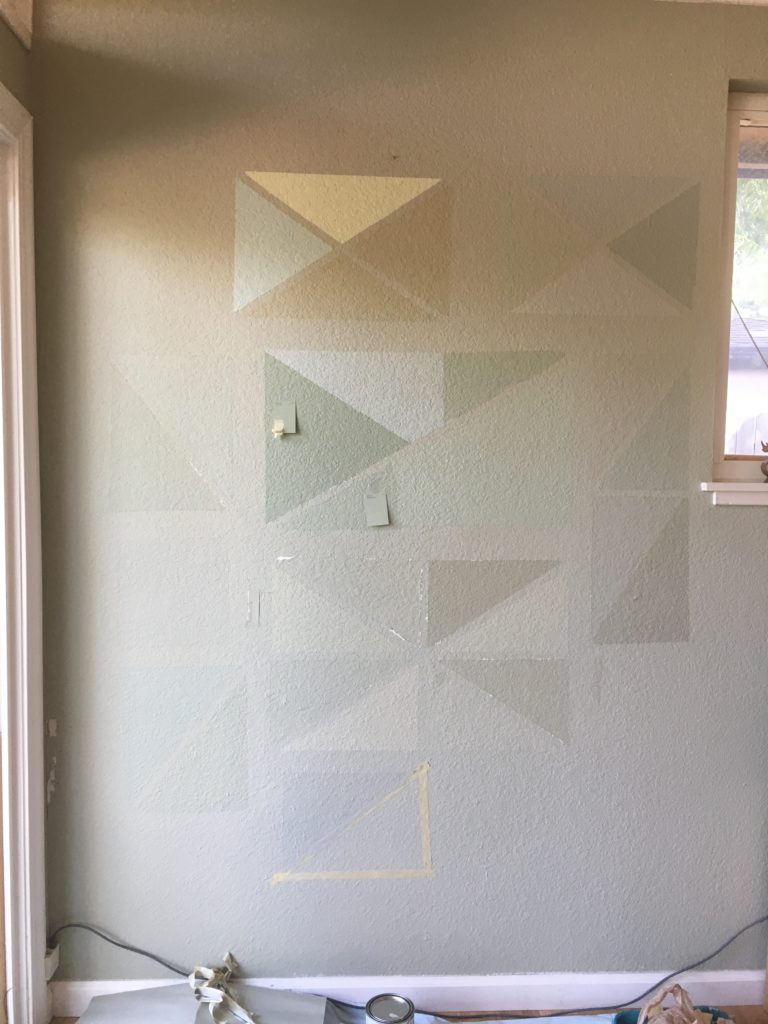
Past the way, well-nigh half a dozen of these colors looked exactly the perfect match when painted on an index-card!!!
Later (much, much later), nosotros institute out that the colour was discontinued years ago and that a custom mix was made in Kelly-Moore. Upward to this point, we had only used Sherwin-Williams paint in our house because we loved the Harmony line of paints. Long story brusque, we ended up making our own custom mix, which was great, as we could exam the colour correct away on our wall. I was so relieved when we figured it out! Nosotros were and so grateful to the people at Kelly Moore who were willing to aid us out and requite us some colorants so we could tweak the colour at home. Here's our living room now:

Commencement, nonetheless, we needed to understand the information on the paint label. Specifically I wanted to understand the colorant formulation/recipe. It was strange, only I could not find a lot of information online, and had to ask multiple paint-store employees. I figured I'd do this petty post to share what I learned well-nigh Kelly-Moore and Sherwin Williams paint labels.
Permit's start with Kelly-Moore:
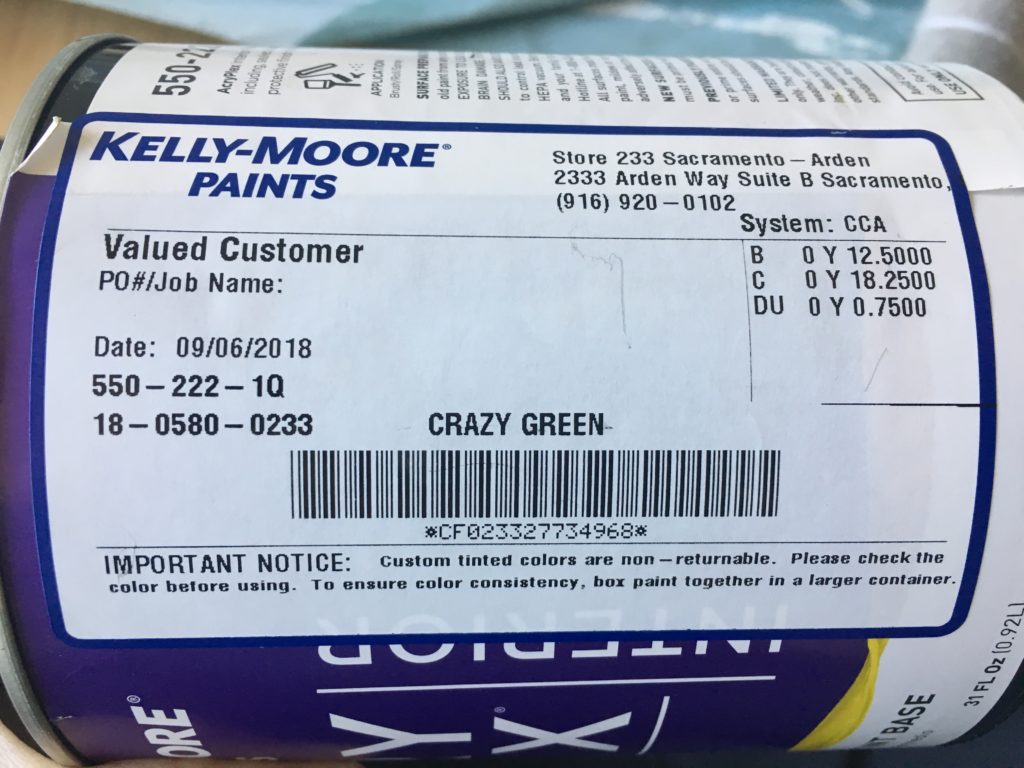
At the very top correct hand corner, the shop code, accost, and phone number where the pigment was purchased is shown.
On the left-hand side, we run across the date the pigment was made, and 2 boosted lines of numbers (in green box beneath):
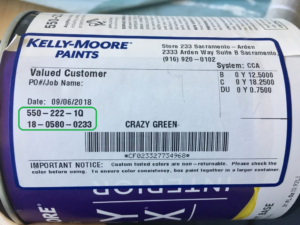
Hither'due south what it ways:
550 – 222-1Q = (terminate type) – (base of operations type) – (volume)
Case: 550 end, which is flat – 222, which is the medium tint base – 1Q meaning one quart.
*notation: The tint base of operations is of import, as the aforementioned colorants interact with different tint bases differently.
18 – 0580 – 0233 = (last ii digits of year) – (code, if custom) – (store code)
Instance: year paint made, which is 2018 – the custom color lawmaking for this pigment is 0580 – and the store code is 0233.
In the middle, above the bar code, is the name of the pigment. If you have a custom mix, you lot get to choose a proper noun, or sometimes, the person helping you is inspired.
Example: Name of this custom paint color is "Crazy Greenish".
To the right side of the label, the colorant system used is indicated. Due to various ecology regulations in your state, paint companies might use a different organisation to be compliant. Come across green box below.
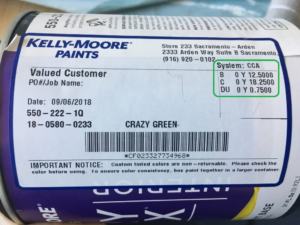
Example: "CCA" colorant system
Beneath that, the formula, or recipe for the colorants used in this paint is shown. I'll just go over the first line.
B 0Y 12.5000 = (Colorant used) (number of oz. of colorant) (number of drops of colorant)
Example: The black (B) colorant is used here, and the total amount of color used is zip ounces and 12.v drops. The colorant codes I am familiar with are:
B = Black (blue undertones)
C = Gold Yellow
DU = Light-green (blue undertones)
Fifty = Brown
*notation: Kelly-Moore uses a organisation of 48 drops/fluid oz. You tin employ this conversion to calculate how much of each colorant is in your pigment. Notwithstanding, go along in listen that in that location are variances between stores, betwixt equipment used, and well as operator treatment. Nosotros converted this to metric milliliters so we could tweak and record our results. In instance y'all're interested, one US fluid oz. is ~29.5735 ml, so one drib of Kelly-Moore colorant is (ane/48)*29.5735= ~0.616 ml.
*note: Our local store told us that 1/viii of a driblet (or 0.1250 in the above number arrangement) is the smallest increment they can add to tweak a paint, but best check with your local shop. At these quantities, shop/equipment/operator variance tin really affect the outcomes. In case you're interested, this is (1/viii)*0.616 ml = ~0.077 ml.
At present let'due south take a wait at Sherwin-Williams:
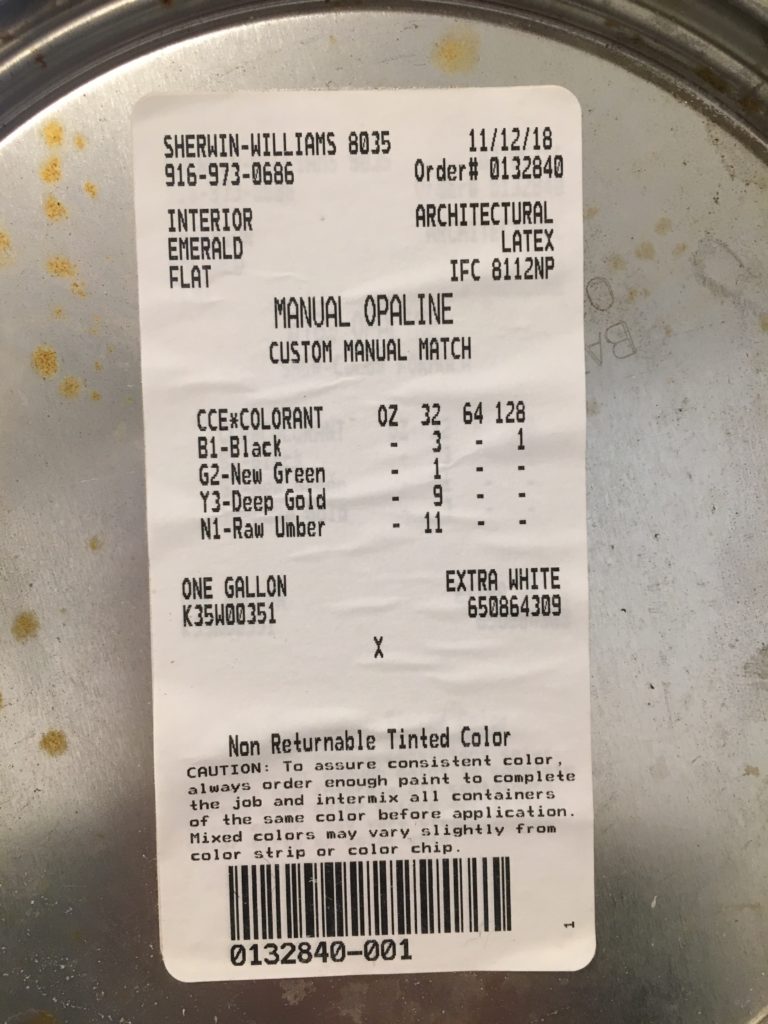
Sherwin-Williams has more data that is immediately understandable on their labels.
On the tiptop left hand corner, the store code and phone number where the pigment was purchased is shown. On the right manus corner, the date and order number is shown.
Below that, you have data near the paint. Sherwin-Williams is pretty adept nigh writing out what the paint is.
Interior = Whether interior or exterior
Emerald = Line of paint
Flat = Finish of paint
Beneath that, you have the proper name of the color. Encounter green box below:

Instance: The name of this paint color is "MANUAL OPALINE", which is a CUSTOM Transmission MATCH
*note: If you purchase a Sherwin-Williams formulation, the name is usually the color lawmaking followed by the name (i.due east. "7558 MEDICI IVORY"), and the statement, "SHER-COLOR FORMULA".
Below that, the formula, or recipe for the colorants used in this paint is shown. Run into green box below. I'll just go over the start 2 lines.
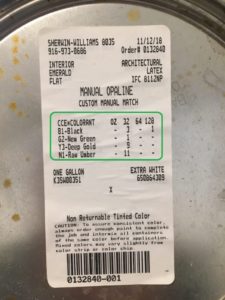
CCE*COLORANT OZ 32 64 128
= (Colorant organisation) (number of oz. of colorant) (1/32nd of an oz. of colorant) (1/64th of an oz. of colorants) (ane/128th of an oz. of colorants)
B1-Black – 3 – 1
Example: The B1-Blackness colorant is used here, and the total corporeality of color used is zippo ounces, iii of 1/32nd of an oz., zero of 1/64th of an oz., and i of 1/128th of an oz. I won't go into the colorant codes, as their full names as well appears on the characterization.
*annotation: Sherwin-Williams uses a system of fractional fluid oz. Their labeling system refers to the part of an oz., merely you can also think of the above as 32 drops/fluid oz. In case you lot're interested, ane The states fluid oz. is ~29.5735 ml, so 1 drib of Sherwin-Williams colorant is (i/32)*29.5735= ~0.924ml. If you think of it this fashion, the same example in a higher place is now:
Case: The B1-Black colorant is used here, and the total amount of color used is cypher ounces, 3 drops, zero half drops, and 1 quarter drops.
You lot can use this conversion to calculate how much of each colorant is in your paint. Nevertheless, keep in listen the variances mentioned in a higher place.
*note: As y'all can run into, the smallest increment that can be noted here is one/4 of a drib, therefore, the smallest increment of a colorant that tin be added is 1/4 of a drib.In case you're interested, this is (1/four)*0.924 ml = ~0.231 ml.
Below that, the book of the paint and the tint of the base of operations is shown. See green box below:
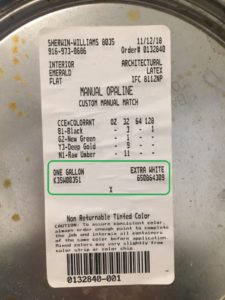
1 GALLON Extra WHITE = 1 gallon volume extra white base of operations tint.
As for that little 10 at the bottom of this, this is usually where they daub a scrap of the paint itself.
I hope this was helpful in having a ameliorate idea of what colorants and how much is going into your paints, in case y'all e'er find yourself fallen in dearest with a mysterious paint that y'all must recreate in Kelly-Moore or Sherwin-Williams!
Happy painting!
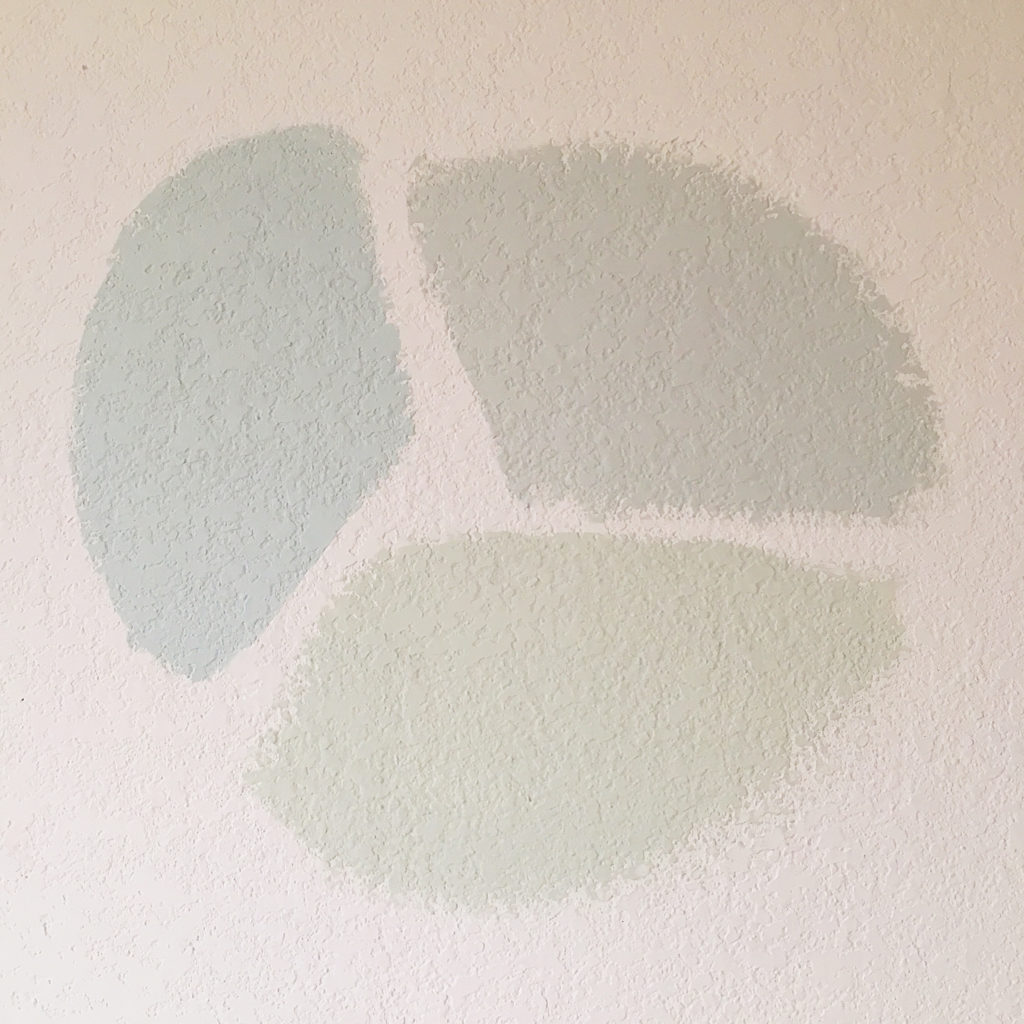
robertsonstord1974.blogspot.com
Source: https://dearshari.com/2018/understanding-sherwin-williams-and-kelly-moore-paints/
Post a Comment for "How to Read Sherwin Williams Batch Codes"